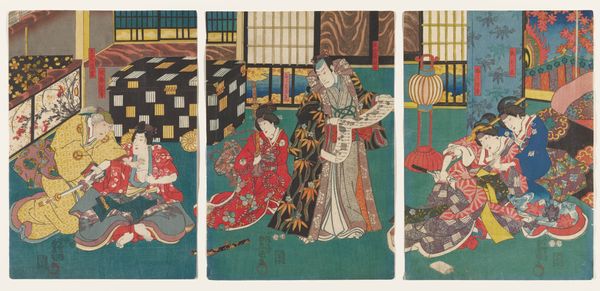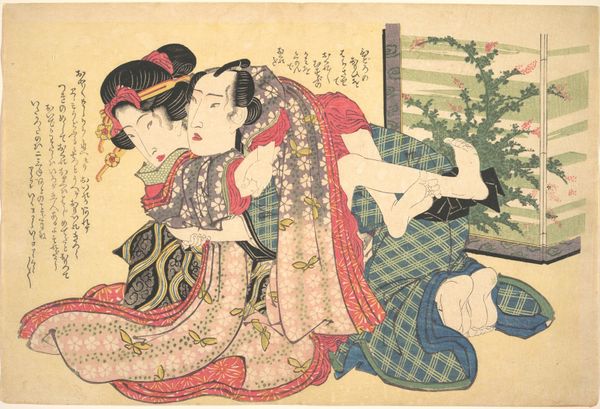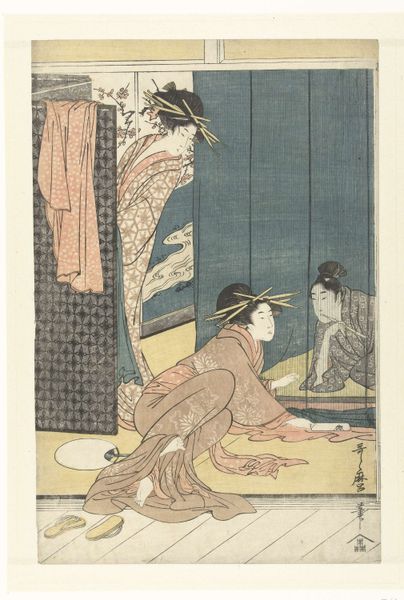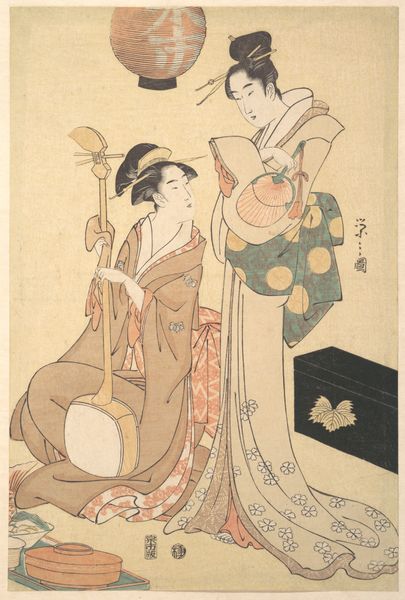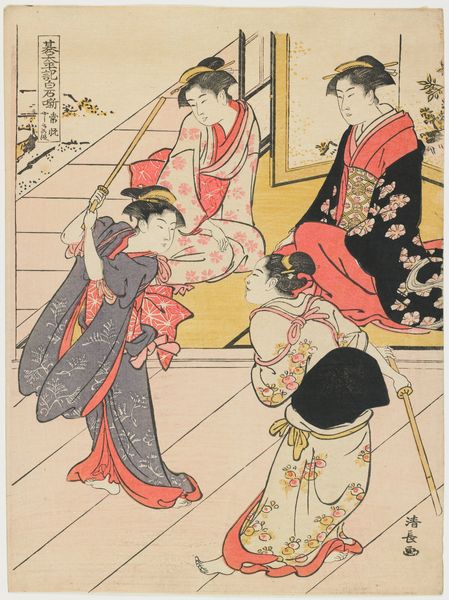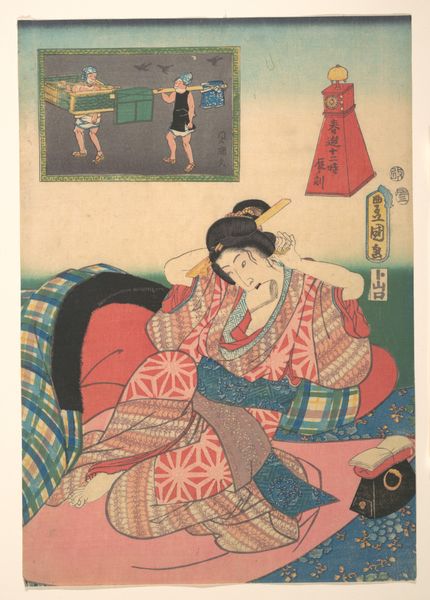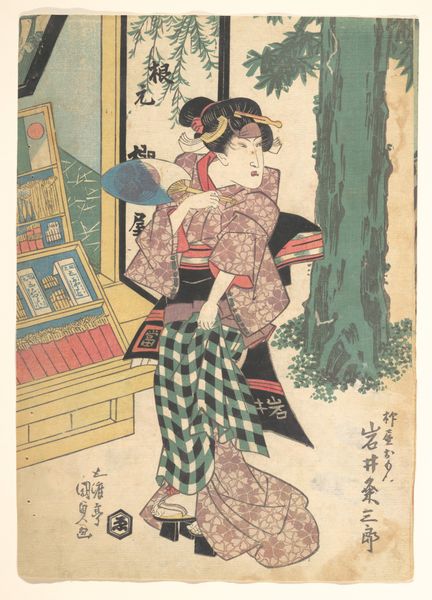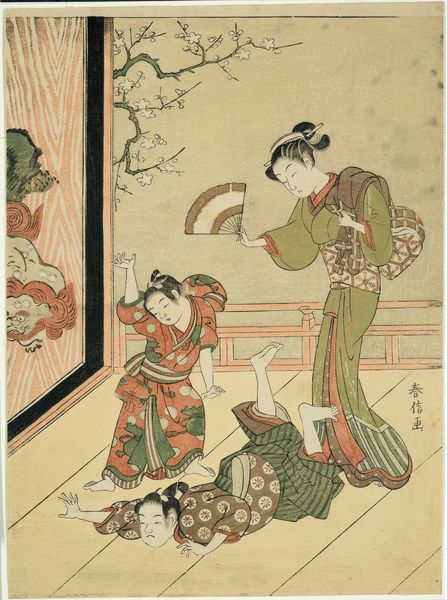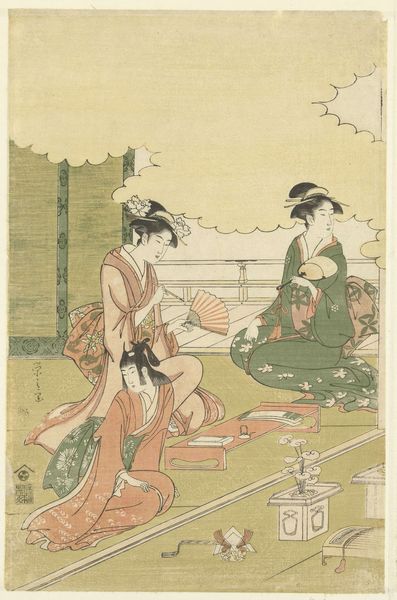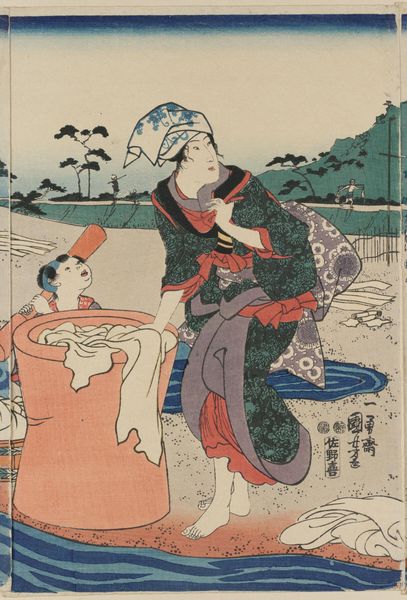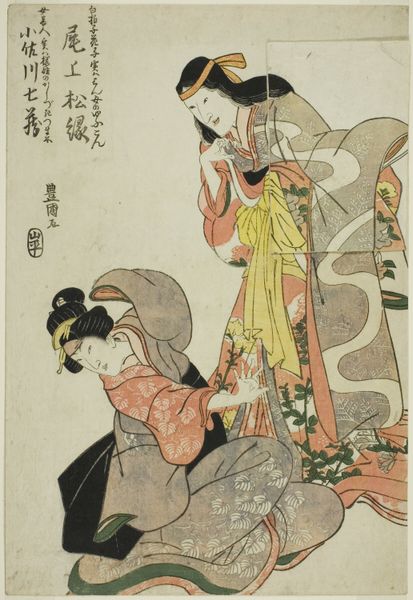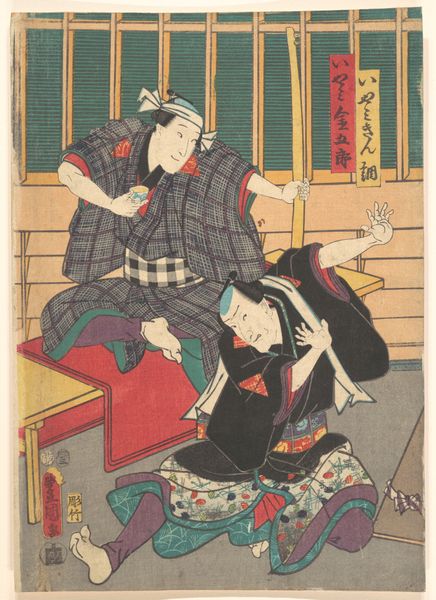
print, woodcut
# print
#
ukiyo-e
#
figuration
#
woodcut
#
genre-painting
Dimensions: 10 1/4 x 15 3/16 in. (26.1 x 38.6 cm) (image, sheet)
Copyright: Public Domain
Curator: Good morning. We’re standing before “Prostitutes Imitating the Four Sleepers,” a woodcut by Okumura Masanobu dating from around the 1720s. It’s currently part of the Minneapolis Institute of Art's collection. Editor: The overall effect is…slumber party, but make it classical. There’s a peaceful vibe to it, a quiet intimacy in the way the figures are draped together. The colors are soft, too. It has this antique quality. Curator: Absolutely. Masanobu, a pivotal figure in Ukiyo-e, here utilizes the woodcut technique to explore figuration. Notice the linear quality of the figures, juxtaposed with the rich patterns of their robes, creating a visual harmony between line and form. Also, the choice of the “Four Sleepers” theme, traditionally associated with religious hermits, is cleverly subverted here. Editor: Right! These aren't hermits… These are ladies of the night taking a breather! This contrast… the sacred vs. the everyday… it's kind of hilarious. What strikes me is the relaxed atmosphere: One woman is fast asleep using an instrument as pillow. Another has a hand to her face and next to her, a drowsy cat! Everyone is knackered, including the tiger striped feline. Curator: Exactly, it offers a fascinating commentary on societal values. We should note the significance of the window in the background. Its presence both confines the figures and allows for an element of depth to enter the work, creating a subtle but compelling dialogue between interiority and exteriority. Editor: It really adds something, doesn't it? Even though the lines are simple, the window helps set this interior space as very domestic, mundane even. Despite the obviously sensual theme, I can’t help but sense a profound sense of comfort and perhaps a longing for peace. Curator: Indeed. The beauty lies in the tension. We see how Masanobu challenges accepted representations of the sacred in early 18th century Japanese society through structural interplay between setting and the activities portrayed within the space. Editor: Well, Masanobu certainly invites a complex conversation, doesn't he? An opportunity to reflect on beauty, labor, and how societal norms impact even moments of repose. Curator: Yes. It is indeed a fascinating piece of work and a valuable contribution to Ukiyo-e.
Comments
No comments
Be the first to comment and join the conversation on the ultimate creative platform.

